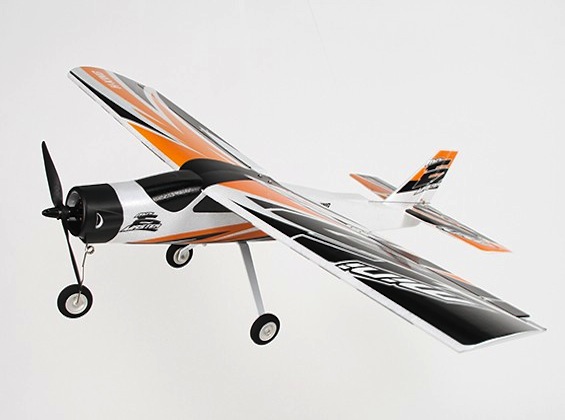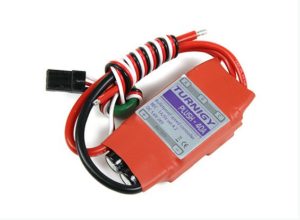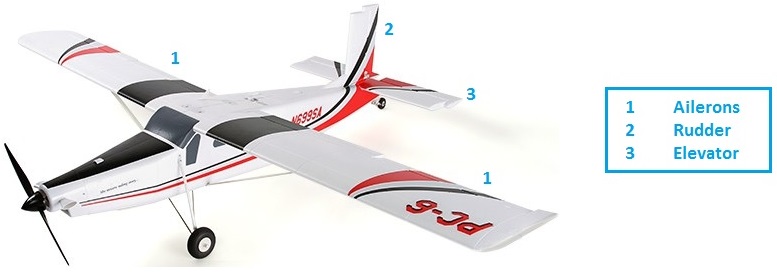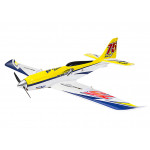
It’s important that you know some of the key components that make your plane. In most cases, you will have to do some minor assembly for your first plane which will require some minor tweaking to get it flying right. It also may be that you crash and need to replace parts. A good start is knowing what the parts are so you can do some research.
ESC
 ESC stands for Electronic Speed Controller. This device not only allows you to control your motor, but it also protects your battery from being over-discharged.
ESC stands for Electronic Speed Controller. This device not only allows you to control your motor, but it also protects your battery from being over-discharged.
ESCs are not all the same. Some will handle higher voltages and amps than others. If you're replacing an ESC, you need to make sure you choose the right ESC for your model that can handle the volts and amps. All ESCs are clearly labeled with their tolerances as a reference.
Brushless Motor
A brushless motor uses an ESC rather than having brushes to control the engine through the continual switching of the phase of the windings.
 Most importantly, a brushless engine is much more efficient than a standard brushed motor and generally lasts much longer!
Most importantly, a brushless engine is much more efficient than a standard brushed motor and generally lasts much longer!
Brushless motors are most commonly produced in two forms. The first being outrunner, which means the motor armature stands still and the case spins around it. In other words, the outside of the motor spins around the inside, which is highly visible. The second type is an inrunner in which the armature is spinning inside the case so all you see is the motor shaft spinning and nothing else moving. Both types have their advantages and disadvantages but do pretty much the same thing.
LiPo Battery
 A lithium-ion polymer battery known in the RC hobby community as a LiPo battery is powerful and light. They’re also rechargeable and provide enough energy in their small form to enable you to fly. LiPo batteries can be sourced quite cheap and should be treated with respect as they can be dangerous if not managed properly.
A lithium-ion polymer battery known in the RC hobby community as a LiPo battery is powerful and light. They’re also rechargeable and provide enough energy in their small form to enable you to fly. LiPo batteries can be sourced quite cheap and should be treated with respect as they can be dangerous if not managed properly.
When choosing a battery you need to ensure you choose the right battery because they come in many different arrangements.
- Voltage: Most common batteries are 11.1 volts or 14.8 volts
- Amps: The amount of amp draw can differ between batteries
- Capacity: Batteries store different amounts of energy
- Dimensions: All batteries have different physical dimensions
- Weight: The weight of a battery can greatly affect flight characteristics
Radio Transmitter
A radio transmitter allows you to control your aircraft through a radio signal. Your inputs are converted via a signal to the plane through the receiver.
 Most radios these days operate on the 2.4Ghz spectrum and have what’s called frequency hopping to prevent others from interfering with the control of your model. This makes flying easier because there is no need for you or others to carry crystals to the field as they did in the earlier days allowing model flyers to remain on one frequency.
Most radios these days operate on the 2.4Ghz spectrum and have what’s called frequency hopping to prevent others from interfering with the control of your model. This makes flying easier because there is no need for you or others to carry crystals to the field as they did in the earlier days allowing model flyers to remain on one frequency.
Radio transmitters come in two different modes: Mode 1 and Mode 2. This relates to the configuration of the radio gimbals (sticks) on the radio. For more detailed information, refer to the article titled: Your First Radio Transmitter.
Receiver
 A receiver is what allows you to control your plane through a radio link. Installed physically on the aircraft, it’s powered either by your ESC or a separate battery pack. If you’re planning on flying more planes, you can control them all by installing a receiver in each one and using the same radio transmitter.
A receiver is what allows you to control your plane through a radio link. Installed physically on the aircraft, it’s powered either by your ESC or a separate battery pack. If you’re planning on flying more planes, you can control them all by installing a receiver in each one and using the same radio transmitter.
A receiver can be powered by your ESC or it can be powered independently by its own battery or a device called a Battery Eliminator Circuit (BEC).
Servo
 A servo is a small electrical device installed on your plane that moves around in an arc allowing you to control your plane's movements. This is achieved by connecting the servo to a control rod through to control horn and finally, the control surface.
A servo is a small electrical device installed on your plane that moves around in an arc allowing you to control your plane's movements. This is achieved by connecting the servo to a control rod through to control horn and finally, the control surface.
Servos are powered by the receiver and come in many shapes and sizes. Some of them can handle greater forces generated by the wind when it comes into contact with the control surface of the plane. It's important you choose the right servo for your plane because some only have nylon gearing and others are much stronger with metal gearing. Metal geared servos are generally much stronger than nylon geared servos.
Control horn and Control Rod
A control horn is attached to the control surfaces of your plane (Rudder, Elevator, ailerons…) which in turn is connected to a control rod. The Control rod is generally a long piece of steel that connects to the control horn and in turn, all three devices move the control surface in opposite directions.
Control Surfaces
The most common control surfaces on a plane when starting out are as depicted below:
Written by Thomas
Hear it First: Join our Mailing List
Sign up to receive new product updates, exclusive discounts, news, and more!







